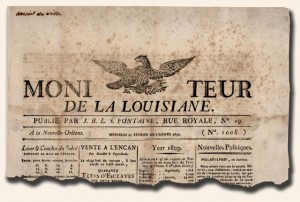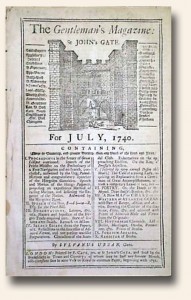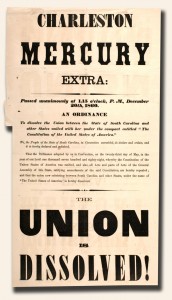“Brownsville Gazette” – a gem from the American Antiquarian Society…
August 24, 2015 by TimHughes · Leave a Comment
Timothy Hughes Rare & Early Newspapers’ focus: The American Antiquarian Society
In celebration of its 20oth anniversary the American Antiquarian Society published a beautiful exhibition catalog titled “In Pursuit Of A Vision – Two Centuries of Collecting at the American Antiquarian Society”. Featured are a fascinating array of books, documents, maps & other paper ephemera, as well as several very rare & unusual newspapers we felt worthy of sharing with our collectors (with permission from the A.A.S.).
 161. “Brownsville Gazette“, Brownsville, Pennsylvania, May 21, 1808
161. “Brownsville Gazette“, Brownsville, Pennsylvania, May 21, 1808
Clarence S. Brigham’s two -volume History and Bibliography of American Newspapers, 1690-1820, published by AAS in 1947, was a landmark in newspaper bibliography. The fruits of thirty-six years of painstaking research are amply displayed in the detailed publishing histories and comprehensive censuses of institutional holdings. For fully 194 (nine percent) of the 2,120 titles included, Brigham was unable to locate any extant issues, though he could document the newspapers’ existence from other sources.
Since Brigham’s day it has been as AAS priority to locate and acquire issues of these “lost” newspapers. Many have been found, and much new information has been gathered towards a supplement to Brigham’s bibliography. Here is one such “discovery issue,” for the Brownsville Gazette, which turned up on eBay in 2004. The accompanying page from the manuscript to Brigham’s bibliography shows his draft entry for this title, clipped from the April 1920 number of the AAS Proceedings, where it was originally printed: from Isaiah Thomas’s 1810 The History of Printing in America (Cat. 9), Brigham knew that the Brownsville Gazette was being published early in 1810; and an 1882 county history citation indicated that it began publication no later than January 14, 1809. But no new information had come Brigham’s way between 1920 and 1947. Based on the discovery issue’s date and numbering, however, it is now known that William Campbell launched the Brownsville Gazette sometime in 1807.
“Le Bijou” – a gem from the American Antiquarian Society…
August 10, 2015 by TimHughes · Leave a Comment
Timothy Hughes Rare & Early Newspapers’ focus: The American Antiquarian Society
In celebration of its 20oth anniversary the American Antiquarian Society published a beautiful exhibition catalog titled “In Pursuit Of A Vision – Two Centuries of Collecting at the American Antiquarian Society”. Featured are a fascinating array of books, documents, maps & other paper ephemera, as well as several very rare & unusual newspapers we felt worthy of sharing with our collectors (with permission from the A.A.S.). 
180. “Le Bijou“, Cincinnati, Ohio, September, 1879
A hobby practiced especially by teenagers, amateur journalism exploded in popularity in the United States following the invention of an inexpensive table-top printing press in 1867. During the 1870s and 1880s, thousands of amateur newspapers were published and liberally exchanged with other amateur journalists around the country. Because of the circumstances under which they were produced, amateur newspapers are becoming of increasing interest to historians, and AAS actively adds to its large collection.
One of the most interesting amateur newspapers at AAS is Le Bijou, edited and published by Herbert A. Clark (ca. 1860-ca. 1924). A great-grandson of Lewis and Clark Expedition leader William Clark, Herbert was born into one of Cincinnati’s leading African-American families. His father Peter, an associate of Frederick Douglass, was politically active and instrumental in establishing free public schools for Ohio African-Americans. Le Bijou is notable for its prominent and forthright and advocacy of civil rights, a fight carried over to the Amateur Press Association, which in 1879 elected Clark it’s third vice-president over the heated objections of its Southern members. Many withdrew, forming in its stead the secret Amateur Anti-Negro Admission Association. Clark delightedly reported on the controversy in the pages of Le Bijou, which he published from 1878 to 1880. He then moved on to a career as a journalist and publisher of African-American newspapers.
Ludicrous advertising in the late 1800’s…
March 20, 2015 by GuyHeilenman · Leave a Comment
Hofstra University maintains a Facebook page where staff from their special collections department can post interesting finds. We recently discovered the following which illustrates one of the collecting strands of the hobby: sensational (or absurd) advertising:
How Paul Revere’s Ride Was Published And Censored IN 1775…
February 6, 2015 by GuyHeilenman · Leave a Comment
 Todd Andrlik, founder and editor of Journal of the American Revolution, and curator, author and editor of Reporting the Revolutionary War: Before It Was History, It Was News (Sourcebooks, 2012), has assembled and written a great piece of scholarship in regards to Paul Revere – specifically, how he was viewed by his contemporaries, using the lens of original newspapers of his day. An excerpt is as follows:
Todd Andrlik, founder and editor of Journal of the American Revolution, and curator, author and editor of Reporting the Revolutionary War: Before It Was History, It Was News (Sourcebooks, 2012), has assembled and written a great piece of scholarship in regards to Paul Revere – specifically, how he was viewed by his contemporaries, using the lens of original newspapers of his day. An excerpt is as follows:
Because of Henry Wadsworth Longfellow’s famous poem, “Paul Revere’s Ride,” most people think that Revere was critical to the start of the Revolutionary War. In trying to dispel Longfellow’s myth of a lone hero, modern scholars have portrayed Revere as just one rider among dozens on 18-19 April 1775, and argued that his previous rides for the Patriot cause might have been more important. A survey of newspapers from 1774 and 1775 shows that in fact those earlier rides had made Revere prominent enough that he did stand out in reports of the fighting at Lexington and Concord, even as Massachusetts authorities kept the extent of his activities quiet.
Paul Revere was a man who wore many hats. He was well known throughout New England for his engravings, his silver work, his Masonic fellowship and his political activity. Plus, in 1774 and early 1775, Revere worked as an express rider for the Boston Committee of Correspondence and the Massachusetts Committee of Safety. He frequently carried letters, newspapers and other important communication between cities, including Boston, Hartford, New York and Philadelphia. Revere’s early dispatches related to some of the biggest American events of the eighteenth century, including the destruction of the tea, the Boston Port Bill and the Suffolk Resolves. In December 1774, at the age of 39, he rode to Portsmouth to alert local Patriot leaders that the Royal Navy was on its way to seize gunpowder and arms from Fort William and Mary. Newspaper printers would eagerly print Revere’s tidings, frequently attributing…
This is a must-read article! View Todd’s scholarship in its entirety at:
How Paul Revere’s Ride Was Published And Censored In 1775
A gem from the American Antiquarian Society…
January 30, 2015 by TimHughes · Leave a Comment
 In celebration of its 20oth anniversary the American Antiquarian Society published a beautiful exhibition catalog titled “In Pursuit Of A Vision – Two Centuries of Collecting at the American Antiquarian Society”. Featured are a fascinating array of books, documents, maps & other paper ephemera, as well as several very rare & unusual newspapers we felt worthy of sharing with our collectors (with permission from the A.A.S.).
In celebration of its 20oth anniversary the American Antiquarian Society published a beautiful exhibition catalog titled “In Pursuit Of A Vision – Two Centuries of Collecting at the American Antiquarian Society”. Featured are a fascinating array of books, documents, maps & other paper ephemera, as well as several very rare & unusual newspapers we felt worthy of sharing with our collectors (with permission from the A.A.S.).
93. “Moniteur de la Louisiane“, New Orleans, February 21, 1810
The Moniteur de la Louisiane, established in 1794 by Louis Duclot, was the first newspaper published in Louisiana. Because so few early issues have survived, its history is difficult to piece together. The earliest known issue — since lost in a fire but preserved in facsimile — was dated August 25, 1794; all other extant issues are from the 1800s. Although founded when Louisiana was under Spanish control, the Moniteur was published primarily in French, the language of Louisiana’s majority population. Over time the newspaper grew in size from octavo to quarto to folio, and it also change publishers. This 1810 issue lists Jean Baptiste Le Seur Fontaine as publisher, A role he had assumed by 1803 and perhaps as early as 1797. Publication apparently ceased in 1814. When Fontaine died that year, he bequeathed to the city of New Orleans his personal file of the Moniteur.
This is one of two issues of the Moniteur sent to AAS by Edward Larocque Tinker as part of his very substantial gift of early Louisiana newspapers and periodicals.
Edward Cave Junior, and his Gentleman’s Magazine…
March 24, 2014 by GuyHeilenman · Leave a Comment
 A few months ago we wrote about what is considered by many to be the most successful literary magazine of all time, The Gentleman’s Magazine. While RareNewspapers.com continues to offer many original issues of this title from the 18th and early 29th centuries, few know of the magazine’s or its founder, Edward Cave, Junior. A collector friend recently came across a wonderful posting by The Society of 18th-Century Gentleman which goes into considerable detail concerning both. An excerpt includes:
A few months ago we wrote about what is considered by many to be the most successful literary magazine of all time, The Gentleman’s Magazine. While RareNewspapers.com continues to offer many original issues of this title from the 18th and early 29th centuries, few know of the magazine’s or its founder, Edward Cave, Junior. A collector friend recently came across a wonderful posting by The Society of 18th-Century Gentleman which goes into considerable detail concerning both. An excerpt includes:
“…Edward Cave eventually purchased a small print house and shortly after began The Gentleman’s Magazine. The first issue appeared in January of 1731. Cave quickly became a highly respected publisher and businessman, and “a multitude of magazines arose” all over the world. The magazine was soon the most well-known and highly respected publication in the English language. It is widely believed that Mr. Cave was the first person ever to use the term “magazine” to describe a monthly publication of this type…”
If you’ve never perused this little gem, you’ll be pleasantly surprised with its detailed coverage of events of the day.
Whatcha Got? Harry Rinker interviews Tim Hughes…
February 28, 2014 by GuyHeilenman · Leave a Comment
 Many collectors are quite familiar with Harry Rinker’s nationally syndicated radio talk show, “Watcha Got?”. Harry recently interviewed Tim regarding the Rare Newspapers collectible. Please enjoy the interview at (click on the audio mp3 button): Watcha Got?
Many collectors are quite familiar with Harry Rinker’s nationally syndicated radio talk show, “Watcha Got?”. Harry recently interviewed Tim regarding the Rare Newspapers collectible. Please enjoy the interview at (click on the audio mp3 button): Watcha Got?
Note: The interview lasts about 15 minutes and begins at the 28:50 time marker (just slide the bar to this point). Better yet, enjoy Harry’s entire broadcast. 🙂
A gem in the American Antiquarian Society… Charleston Mercury Extra…
January 14, 2013 by TimHughes · Leave a Comment
In celebration of its 20oth anniversary the American Antiquarian Society published a beautiful exhibition catalog titled “In Pursuit Of A Vision – Two Centuries of Collecting at the American Antiquarian Society”. Featured are a fascinating array of books, documents, maps & other paper ephemera, as well as several very rare & unusual newspapers we felt worthy of sharing with our Rare & Early Newspapers’ collectors (with permission from the A.A.S.).
 “Charleston Mercury Extra“, December 20, 1860
“Charleston Mercury Extra“, December 20, 1860
The divisive political events of the 1850s had pitted North against South on numerous issues, including the expansion of slavery into the western territories, tariffs on goods such as cotton, and broader concepts of states’ rights vs. federal law. Political compromises made throughout the decade in an attempt to keep the nation together effectively collapsed with the election of Abraham Lincoln in November 1860. South Carolina, heir to the legacy of states’ rights lion John C. Calhoun, was the first to address the possibility of leaving the Union. On November 10, 1860, four days after the presidential election, South Carolina brought the issue to a head by calling a secession convention for the following month.
Considered by virtue of timing to be the first Confederate imprint, this broadside announced to the public the convention’s declaration, on December 20, 1860, that South Carolina would secede from the United States. This sheet was removed from a wall in Charleston by the Boston-born author Caroline Howard Gilman (1794-1888), who had moved permanently to Charleston following her marriage to the Rev. Samuel Gilman. Gilman mailed the broadside to her daughter Eliza in Salem, Massachusetts. Eliza in turn presented the document to AAS member Nathaniel Paine who, heeding the Society’s call to preserve all printed material relating to the unsettling national events, passed the broadside along to AAS.
A high-resolution image of this issue is viewable at: American Antiquarian Society, #47
Historic newspapers make current headlines… an interview on CNN…
December 14, 2012 by GuyHeilenman · Leave a Comment
 A little more than a month ago we introduced Reporting the Revolutionary War: Before It Was History, It Was News, a new book by a collector friend Todd Andrlik. His endeavor, which tells the story of the American Revolution through the eyes of Rare Newspapers, received national recognition through a recent interview on CNN. Please enjoy: History As It Happened
A little more than a month ago we introduced Reporting the Revolutionary War: Before It Was History, It Was News, a new book by a collector friend Todd Andrlik. His endeavor, which tells the story of the American Revolution through the eyes of Rare Newspapers, received national recognition through a recent interview on CNN. Please enjoy: History As It Happened
Alister & Paine Magazine visits Timothy Hughes Rare & Early Newspapers…
December 10, 2012 by GuyHeilenman · 1 Comment
 A few weeks ago the staff of Alister & Paine Magazine came to South Williamsport, PA to visit our historic newspapers archives and to interview Tim for the purpose of introducing their readership to the world of Rare & Early Newspapers. It was fun getting to know such well-traveled individuals – introducing them to the hobby and hearing of their varied experiences. Sharing the love for collecting historic newspapers is always a pleasure… and based upon their reactions, “History continues to never be more fascinating than when read from the day it was first reported. The feature story may be viewed at:
A few weeks ago the staff of Alister & Paine Magazine came to South Williamsport, PA to visit our historic newspapers archives and to interview Tim for the purpose of introducing their readership to the world of Rare & Early Newspapers. It was fun getting to know such well-traveled individuals – introducing them to the hobby and hearing of their varied experiences. Sharing the love for collecting historic newspapers is always a pleasure… and based upon their reactions, “History continues to never be more fascinating than when read from the day it was first reported. The feature story may be viewed at:
Alister & Paine Magazine
Thanks Jenna, Brian, and Kaitlin


